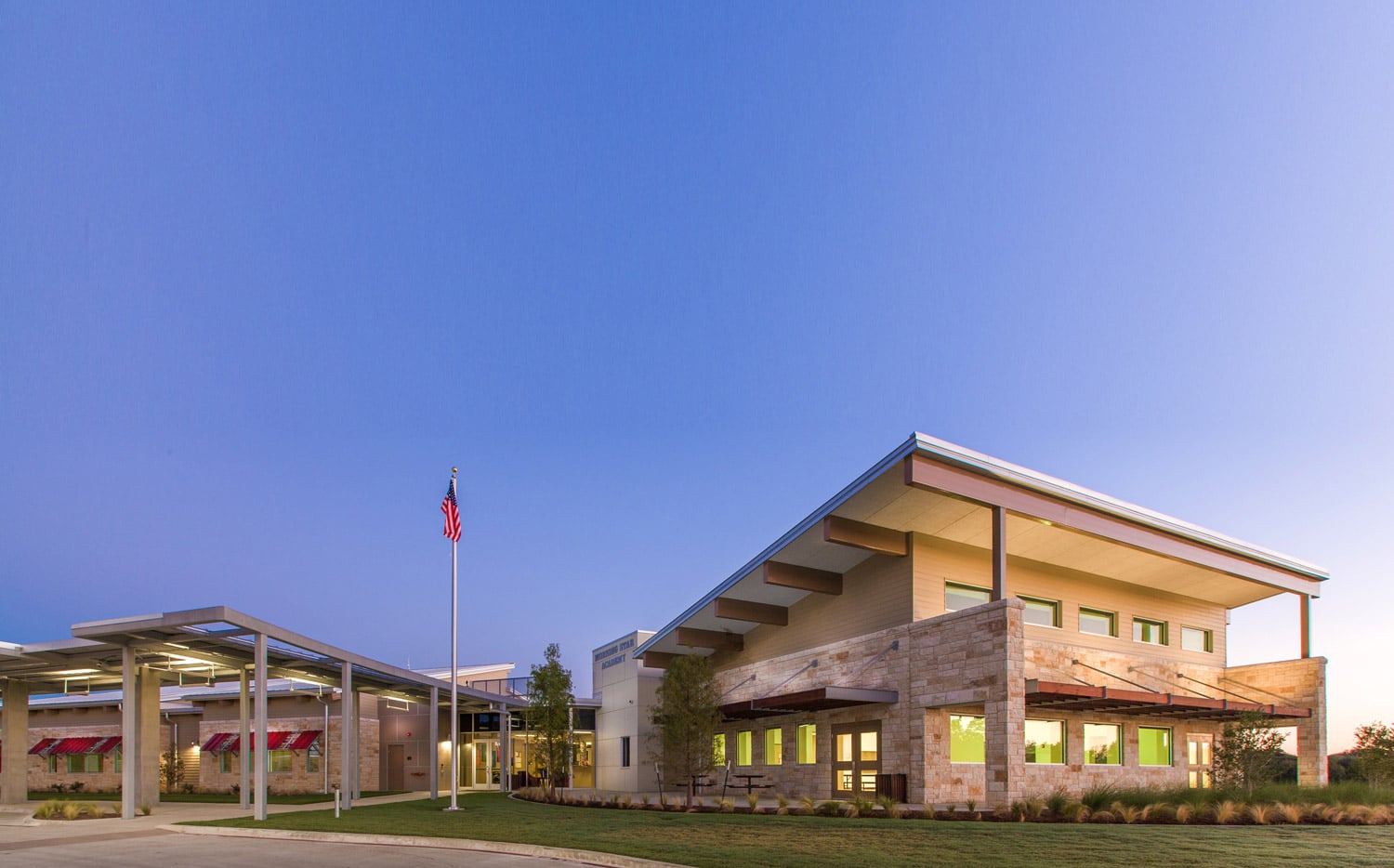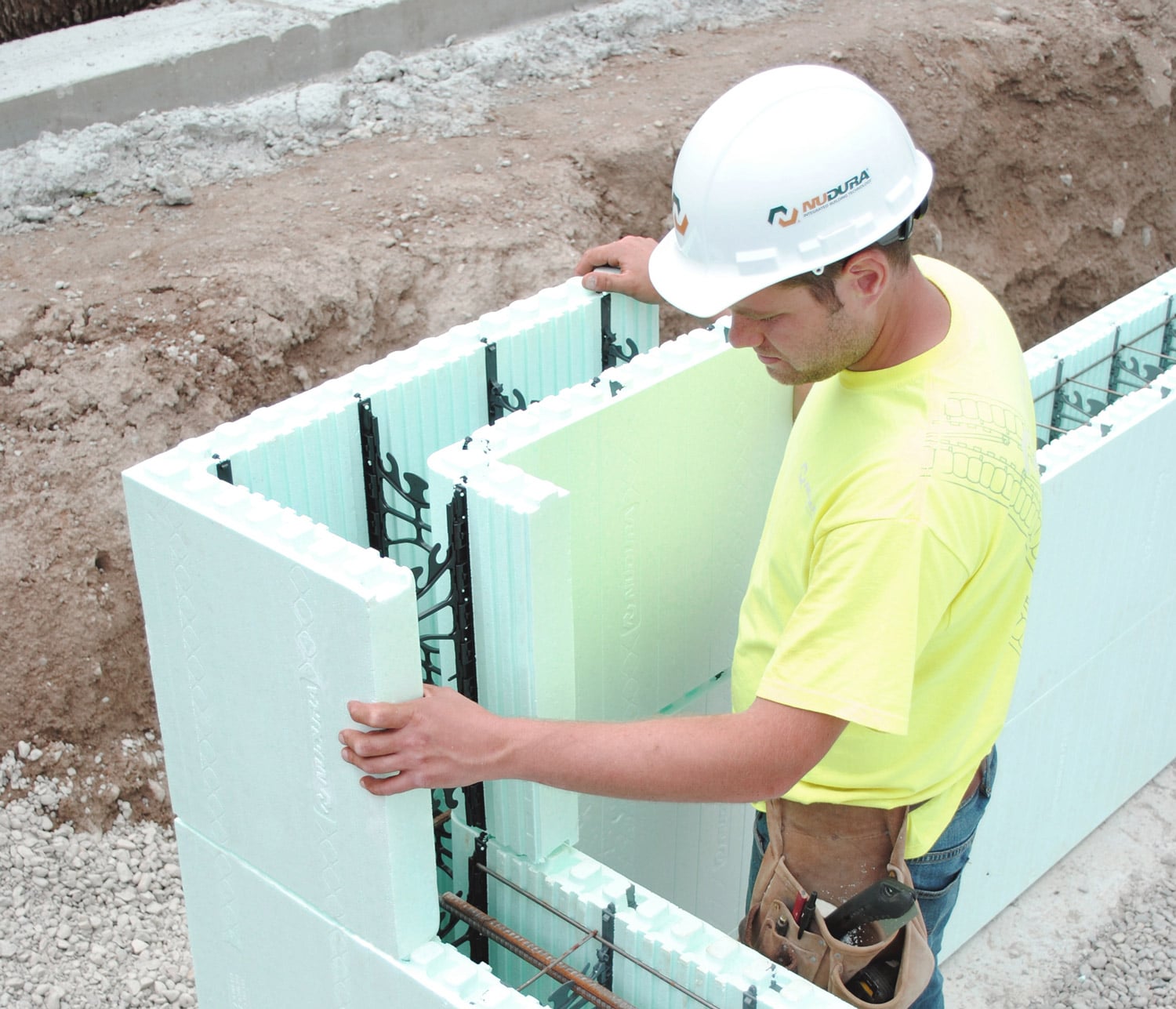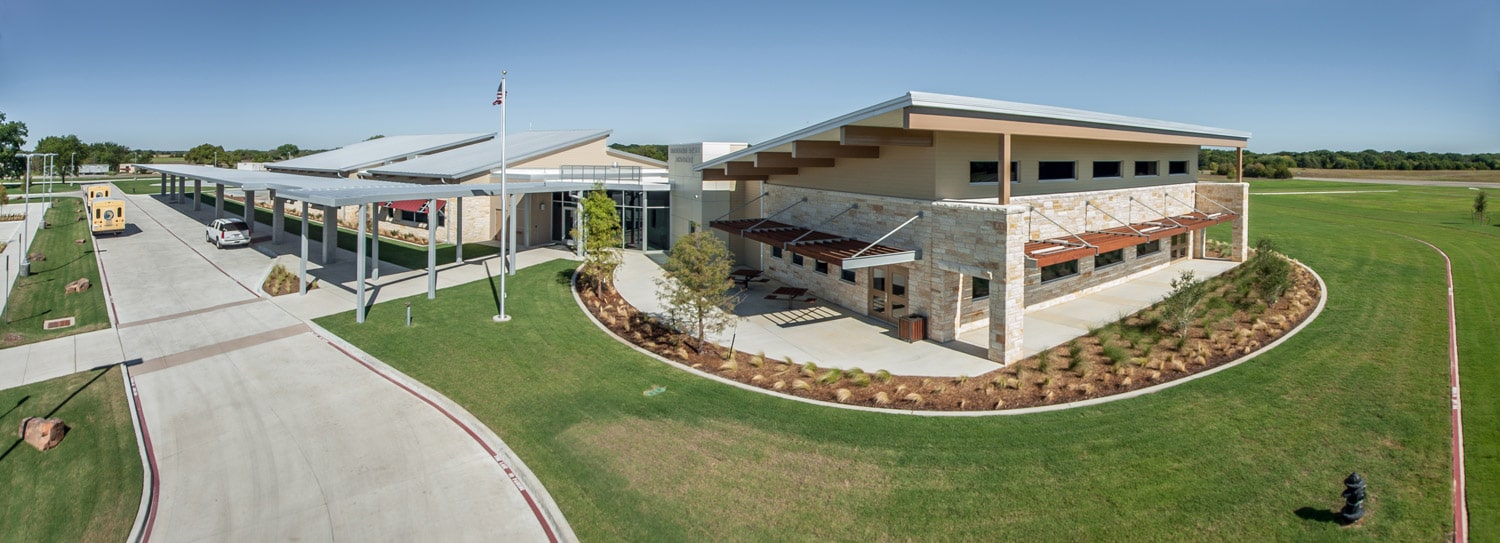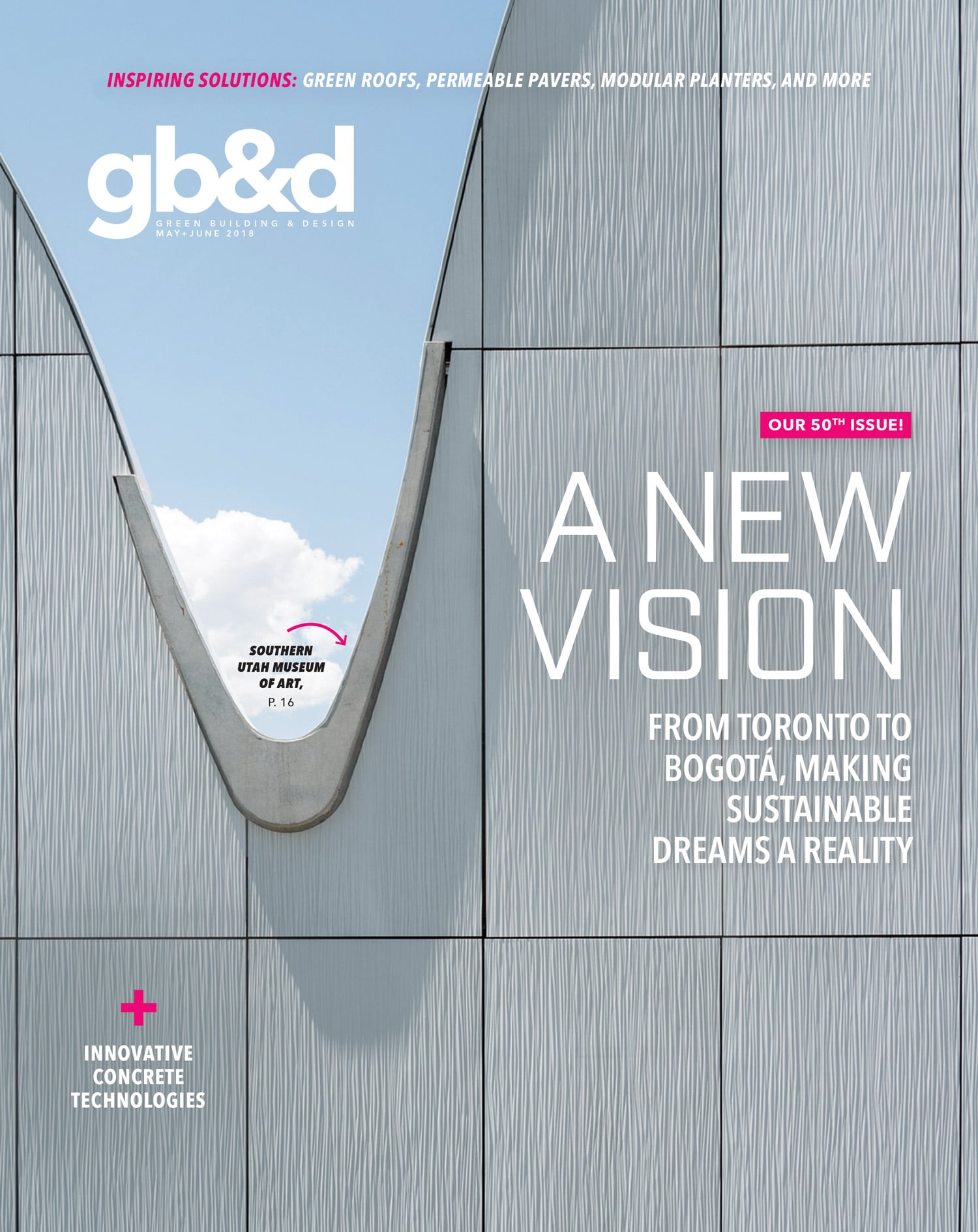How you can save time on your next project and help the environment without sacrificing design.

NUDURA’s work helped the Morning Star Academy project in Texas save time, money, labor, and energy. [Photo: Courtesy of NUDURA]
Morning Star Academy may be a textbook example of why to build with insulated concrete forms,
or ICFs. The private school in Texas received the 2014 ICF Builder Award in the light commercial category, and it exemplifies how ICFs save time, money, labor, and energy.
The NUDURA wall system accomplishes six building steps with one product: It’s a modular form system, air barrier, wall structure, vapor barrier, insulation, and interior/exterior finish anchorage. ICFs hold the monolithically poured concrete, which then stay in place, creating the continuous insulation required in many of today’s building codes.
The Morning Star project showed how these and other qualities helped the school, the project team, and the environment in general. Kevin Peterson, owner of Kevin Peterson LLC and the project’s general contractor, was an ICF advocate from the start. He witnessed a night and day difference on the two-phase project between a competitor’s and NUDURA’s ICFs, having used the competitor on the first phase. When he turned to NUDURA for the second phase, the problem was quickly solved.
FROM OUR MAY+JUNE 2018 ISSUE
The preferred publication of leading green professionals.

[Photo: Courtesy of NUDURA]
Here’s a few reasons you should consider ICFs:
1. They’re taller and faster.
“Using NUDURA cut our installation time greatly,” says Paul Woodard, project manager and design architect at Halff Associates. “Depending on what phase of the program we were in, we reduced installation time by a third to two-thirds off other forms and competing products because it’s a bigger form.”
That’s a money-saving benefit, especially in parts of the country that face weather delays for weeks or even a month at a time.
2. Architects like them.
Two product enhancements add to the effectiveness of StainlessDrains.com systems. First, plugged drains mean waste can accumulate on a floor. How do drains plug if screens are used? Irresponsible workers sometimes dump solids that were captured by a drain strainer into the drain anyway instead of in dry waste disposal. The company’s EZ-Stop-Lock uses a stainless housing lock with a magnet key to ensure employees with that responsibility do the task correctly.
Another product, the Eco-Guard trap seal, is used in the outlet connections of floor drain bodies (or inside floor drain strainers). The devices’ flexible silicone sealing ribs permit an outflow as needed but also prevent liquid backflow, sewage odors, and insects from entering the facilities.

Building with ICFs is good for supporting heavy loads, and the inherent core wall structure can be used as the makings of a modular system. [Photo: Courtesy of NUDURA]
3. They’re green.
The green movement of the early 2000s revealed ICFs’ true eco-friendly potential, but they’re also a money-saving tool, as they generate a lot less waste than comparative building methods. “My disposal fee was nothing compared to the cost of dumpsters used to haul off materials from other projects,” Peterson says.
These ICFs also enhance other efficient building features. Morning Star’s walls have an R value of 22, over and above the wall insulation Woodard says he’d ordinarily have used. That allowed the client to reduce the size of the heating and air equipment needed. Factor into that the fact that the walls’ inherent thermal envelope creates additional energy savings, and you get payback after about a year.
4. They make other jobs easier.
The walls also provide a sound substrate for anchoring nailers and wood plates, and these are often needed for making the connection between walls and roof structures and as a rigid base for fastening trim, he says.
ICFs facilitate electrical conduit, or raceway, installation. A channel may be made in the foam by cutting out a slot in the face of the ICF or by using a tool that will rout or melt the channel. The conduit may then be placed within the channel.

[Photo: Courtesy of NUDURA]
5. They’re affordable.
Years ago, ICFs gained the reputation of being costly. That may have been true more than a decade ago, but remember the money-saving factors above. Also, consider that today’s builders are using more materials and adding more steps to meet stricter building codes—unless they start with ICFs. But the benefits don’t stop there.
“Home and building owners who have built using NUDURA feel secure about their investment as they know it’s built strong,” says Natalie Rodgers, director of marketing for NUDURA. “The strength behind NUDURA is the reinforced concrete core, and concrete is just plain durable. Reinforced concrete ICFs can withstand some of the worst weather Mother Nature can throw at you, including high winds from hurricanes and tornadoes.”
She says builders also love working with NUDURA because they can get twice as much storage space—ICFs fold completely flat. “This allows them to fit twice as many forms in their trucks, saving time, money, and the hassle of repeat transport trips compared to other ICFs currently on the market.”
Peterson says the forms’ fire-resistant qualities also contribute to lesser building insurance in some cases. “We love them,” he says, having used them in nearly 20 projects.

